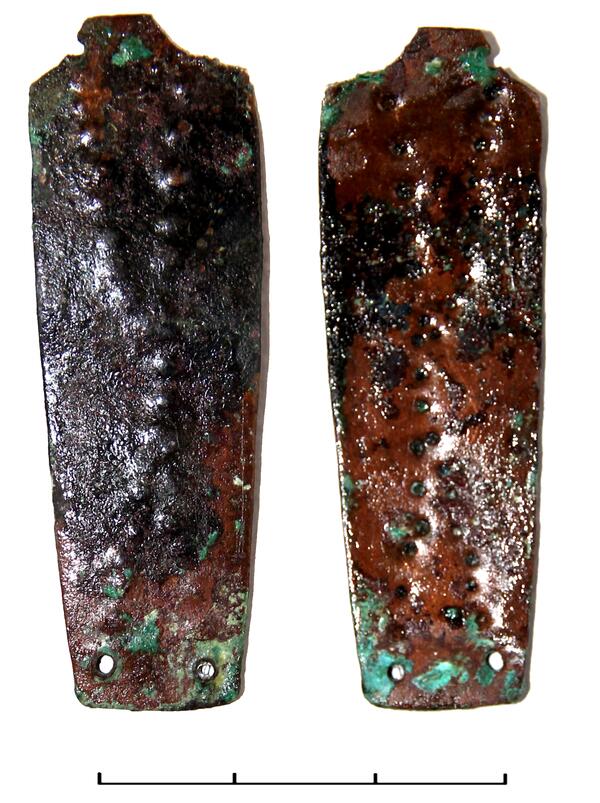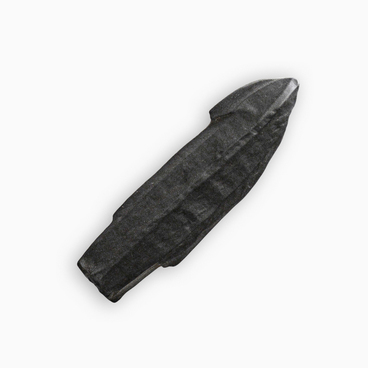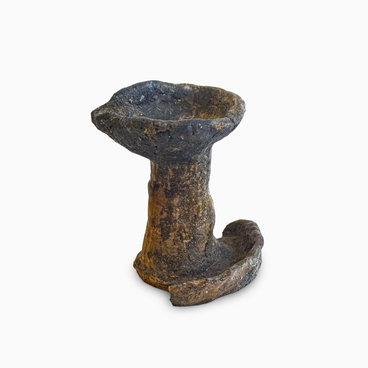The object presented in the museum’s collection was discovered during the archaeological study of one of the ground burials of the Burial Ground Borovyanka-XVII by the expedition of the National Archaeological Natural Park “Batakovo, ” under the leadership of Leonid Ivanovich Pogodin and Albert Viktorovich Polevodov. The object assemblage found in the grave allowed the experts to attribute it to the Andronovo time (Bronze Age, 14th–11th centuries BCE).
The applique is made of a thin rectangular bronze plate, on which two intersecting decoration lines made in punch technique were subsequently embossed. Two holes for fastening (sewing) have been preserved in the corners of the lower part. Most likely, this applique was part of a more complex breastplate placed on the chest of the deceased. This version is supported by the fact that another half dozen plates of different shapes, combined into a kind of breastplate, were found in the grave.
Bronze, as an alloy of copper and tin, does not rust, its appearance can only be threatened by patina, which explains the good preservation of the applique. Such objects were common in the forest-steppe zone of Northern Eurasia during the Bronze Age; their analogues can be found in the Tom, Ob, Irtysh and Altai regions. Although raw materials had to be delivered from the Urals or Altai, the region’s bronze foundry industry was sufficiently developed, which made it possible to produce such appliques in large quantities.
The production process was as follows. The ore was burned together with charcoal in simple clay furnaces buried in the ground. After that, with the help of special vessels (smelting ladles), the separated molten metal was poured into a special mold, and the remaining slag was dumped into heaps, which help archaeologists identify such workshops.
The applique could have been made in one of the
production centers near the Borovyanka-XVII burial ground, on Lake Inberen, and
could also have entered the region as a result of trade contacts. The Andronovo
cultural and historical community was a huge territorial formation stretching
from the Caspian Sea to the Altai and from the Middle Irtysh region to the Aral
Sea, therefore, internal trade relations were very extensive.


